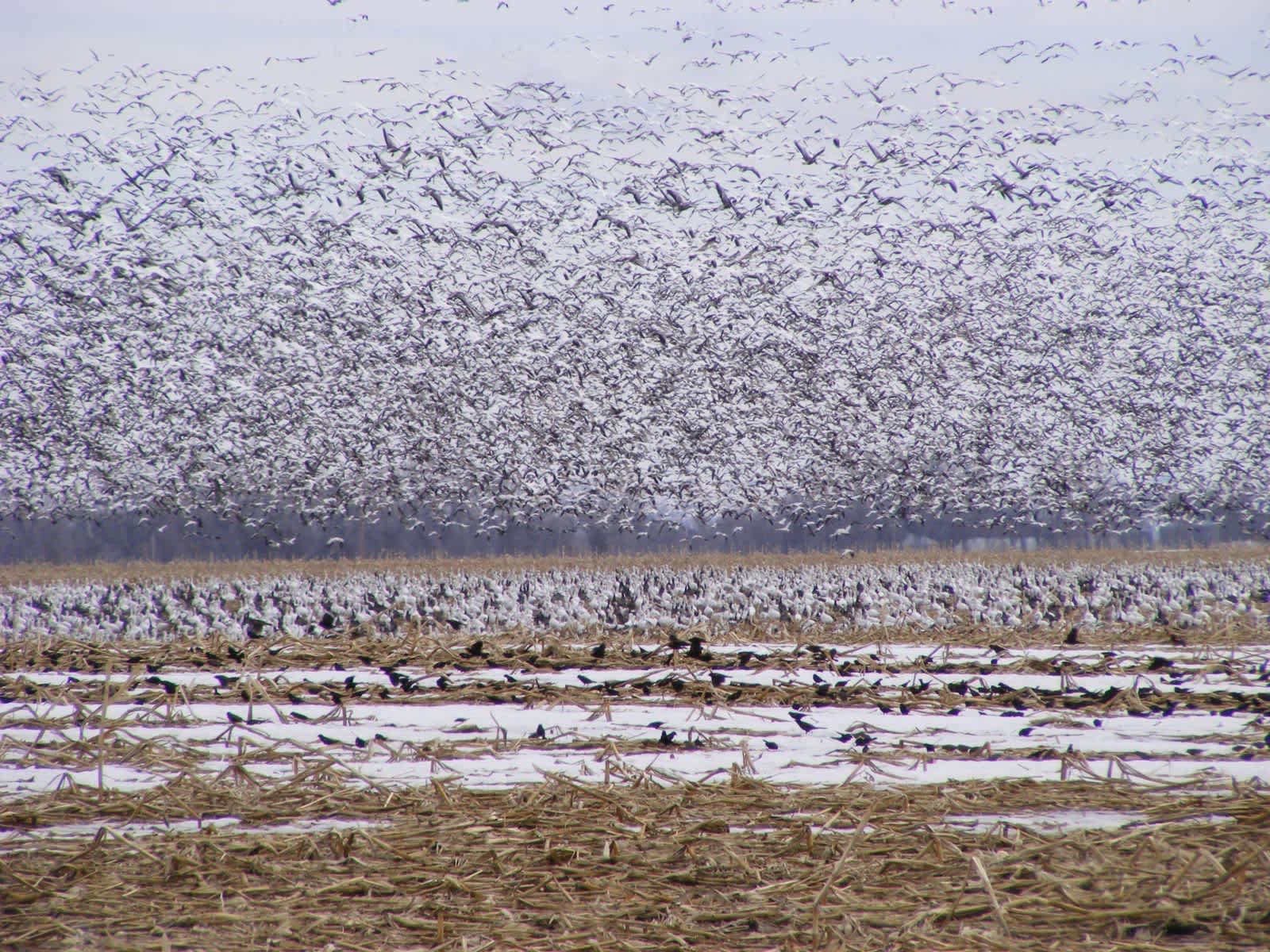Dust Bowl-Era Refuges Mark Milestone as Habitat Shrinks
OutdoorHub 04.21.14

In the 1930s the Dustbowl brought widespread ruin, but in North Dakota, the ecological disaster had one good outcome: the establishment of a slew of national wildlife refuges. Without the construction of reservoirs and the restoration of habitat completed under the direction of the U.S. Fish and Wildlife Service, many wildlife species might not have survived.
In May and June, 29 of these refuges will mark their 75th anniversaries amid a new ecological crisis: the rapid conversion of surrounding prairie grasslands and wetlands to agriculture, energy development and other uses.
“These refuges were established in recognition of the importance of the landscape as a whole in sustaining waterfowl and other species,” says Will Meeks, Assistant Regional Director for Refuges in the Service’s Mountain-Prairie region. “As our native prairie lands vanish, the refuges are becoming more vital than ever as natural oases.”
In late March, the Service and several conservation partners launched the Prairies Conservation Campaign to call attention to the rapid loss of prairie habitat.
North Dakota sits in the country’s Prairie Pothole region, a glaciated landscape of shallow basins covering 5.3 million acres in parts of Montana, the Dakotas, Minnesota and Iowa. Millions of migrating canvasbacks, mallards, pintails, gadwall, teal and other waterfowl flock to seasonal wetland ponds to breed, earning the area the nickname of America’s duck factory.
Together, North Dakota’s wildlife refuges account for only 1 percent of lands in the state. But by partnering with farmers, ranchers and other landowners, the Service has been able to revive damaged habitat on a much wider scale.
Refuges are “not just small isolated parcels,” says Lloyd Jones, who retired in 2013 as refuge manager of Audubon National Wildlife Refuge in North Dakota. “They play a bigger role [by working] in association with the Small Wetlands Acquisition Program that acquires waterfowl production areas and wetland and grassland easements…so people have more opportunity to enjoy wild things and wild places.”
Biologist J. Clark Salyer, hired in 1934 to manage the National Wildlife Refuge System, handpicked many of North Dakota’s Dustbowl-era refuges. He crisscrossed the drought-parched state in his station wagon, sometimes driving 600 miles a day, to find distressed farmlands and buy those he could. In spring 1939, President Franklin Roosevelt signed executive orders establishing 29 new purchases as wildlife refuges.
Of these 29 North Dakota refuges, the Service owns title to 11: Buffalo Lake, Canfield Lake, Florence Lake, Hobart Lake, Lake Ilo, Lake George, Lake Nettie, Lake Zahl, McLean, Rock Lake and Shell Lake national wildlife refuges. The remaining 18 are protected by conservation easements. Here, the Service contracted with private landowners, paying them in return for their agreement to provide important migratory duck habitat.
Additionally, the Service works with willing landowners to enter into financial agreements not to drain, burn or fill wetlands and not to mow or hay grasslands before July 15. There is no public access to easement refuges or private land easements.
Besides serving as breeding, resting and feeding places for migrating waterfowl, refuge wetlands and grasslands in North Dakota provide benefits for people, helping prevent floods, reduce erosion, improve water quality, retain soils and provide opportunities for hunting, fishing and wildlife watching.
But for the past decade or so, high corn and soybean prices have fueled a rush to drain and plow Prairie Pothole wildlife habitat not seen in a century. The last time such wholesale land conversion occurred, the Dust Bowl followed. Recovery was slow. There is concern that current industrial-scale land practices may be even harder to recover from.
The president’s Fiscal Year 2015 budget requests funding to acquire conservation easements on at least 21,000 acres in North and South Dakota. These easements will create certainty for landowners who seek to ensure land and water is conserved for future generations. It will also help stimulate the economy by ensuring working lands stay working, and guarantee recreational opportunities.

